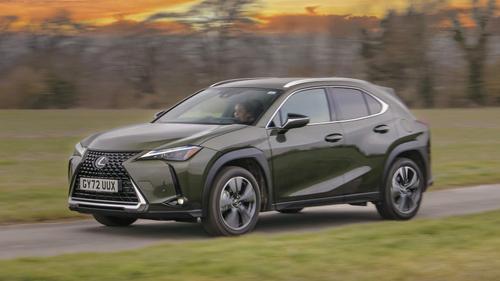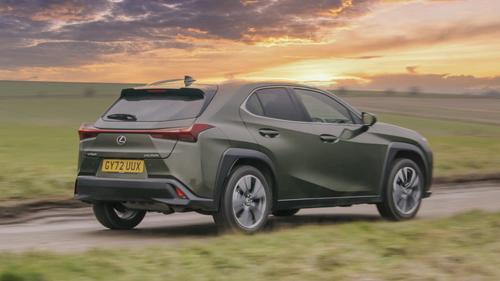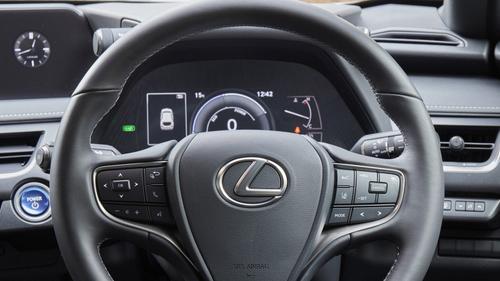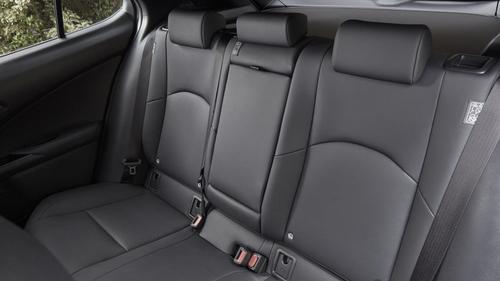
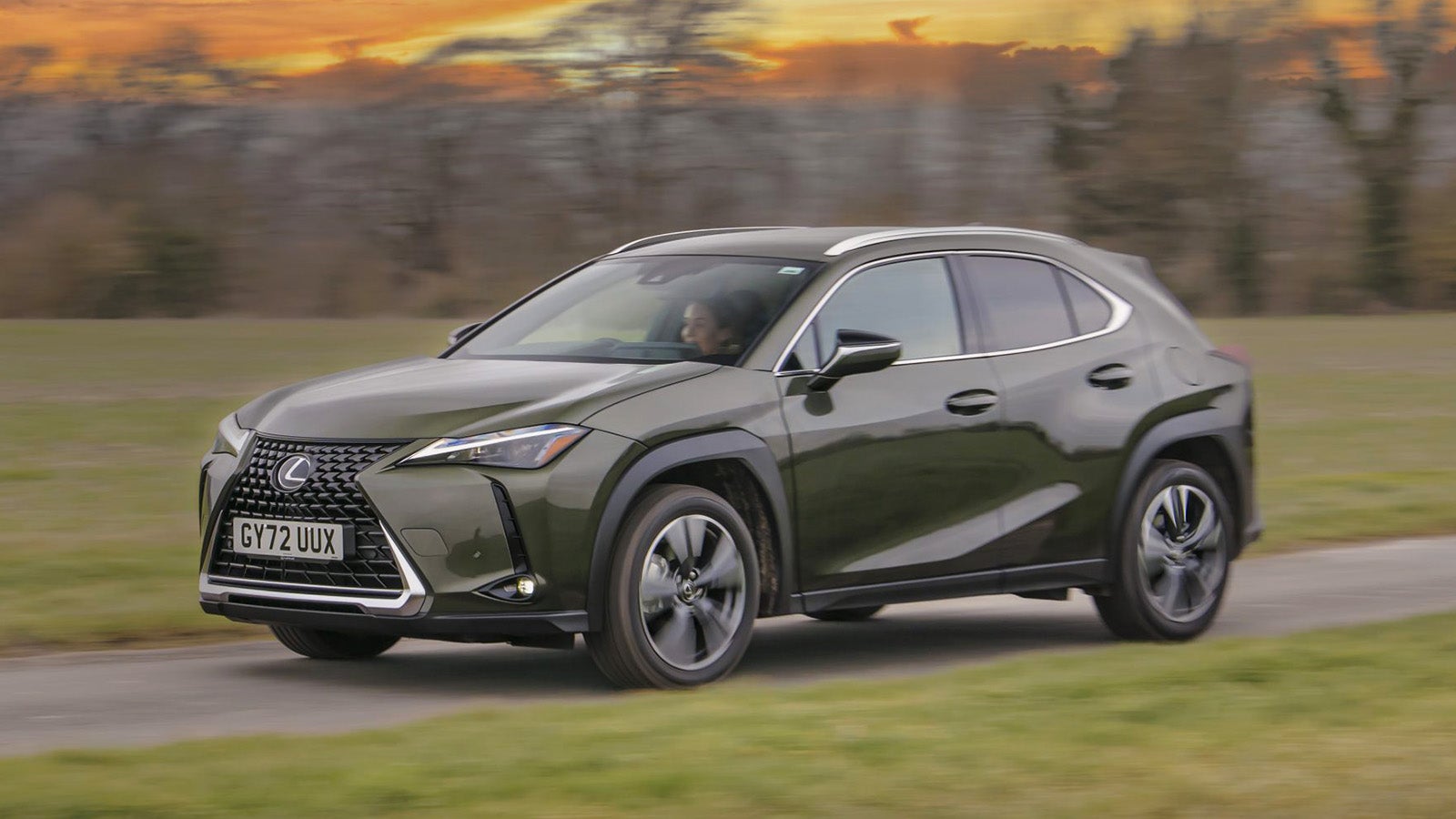
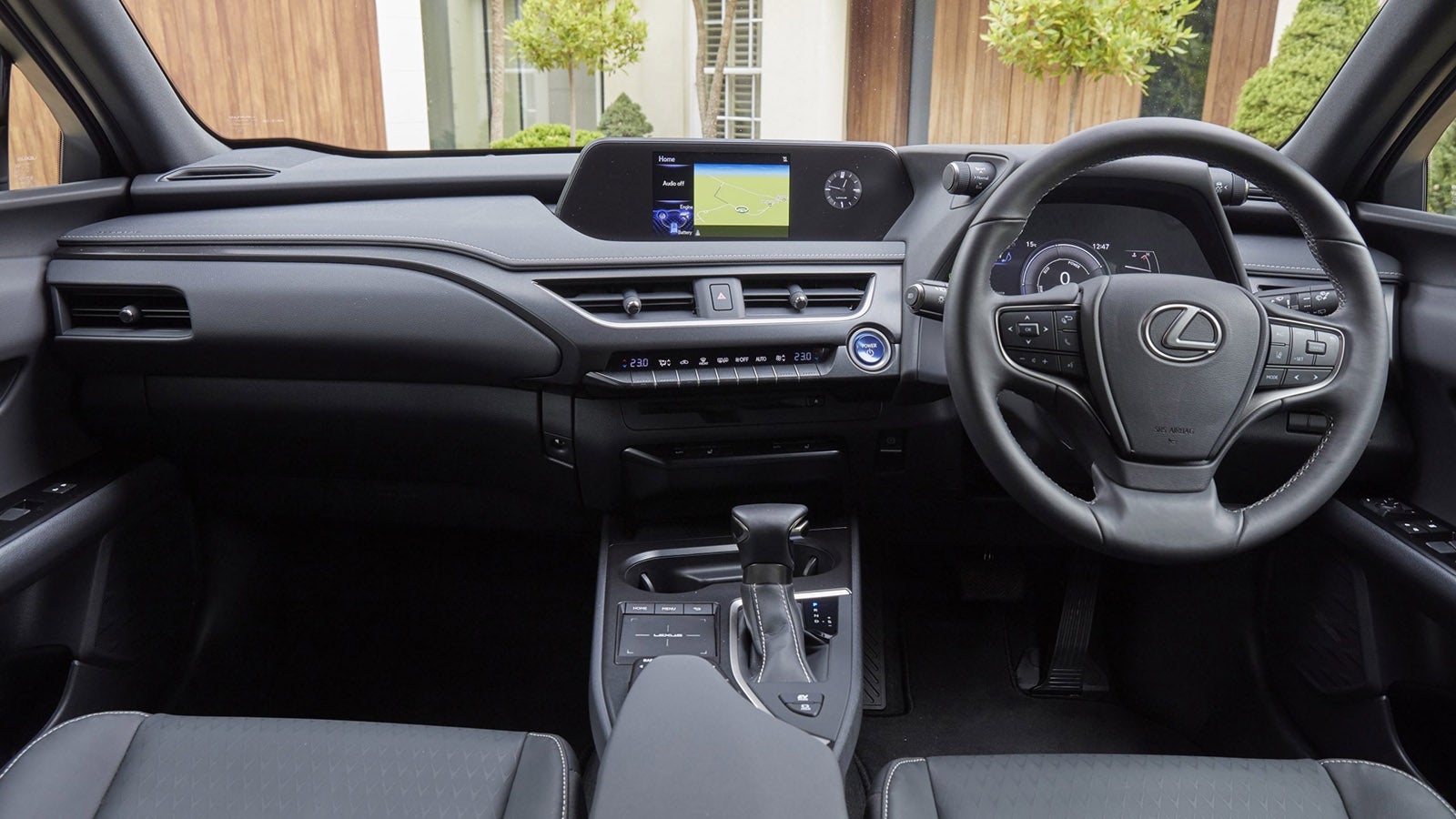
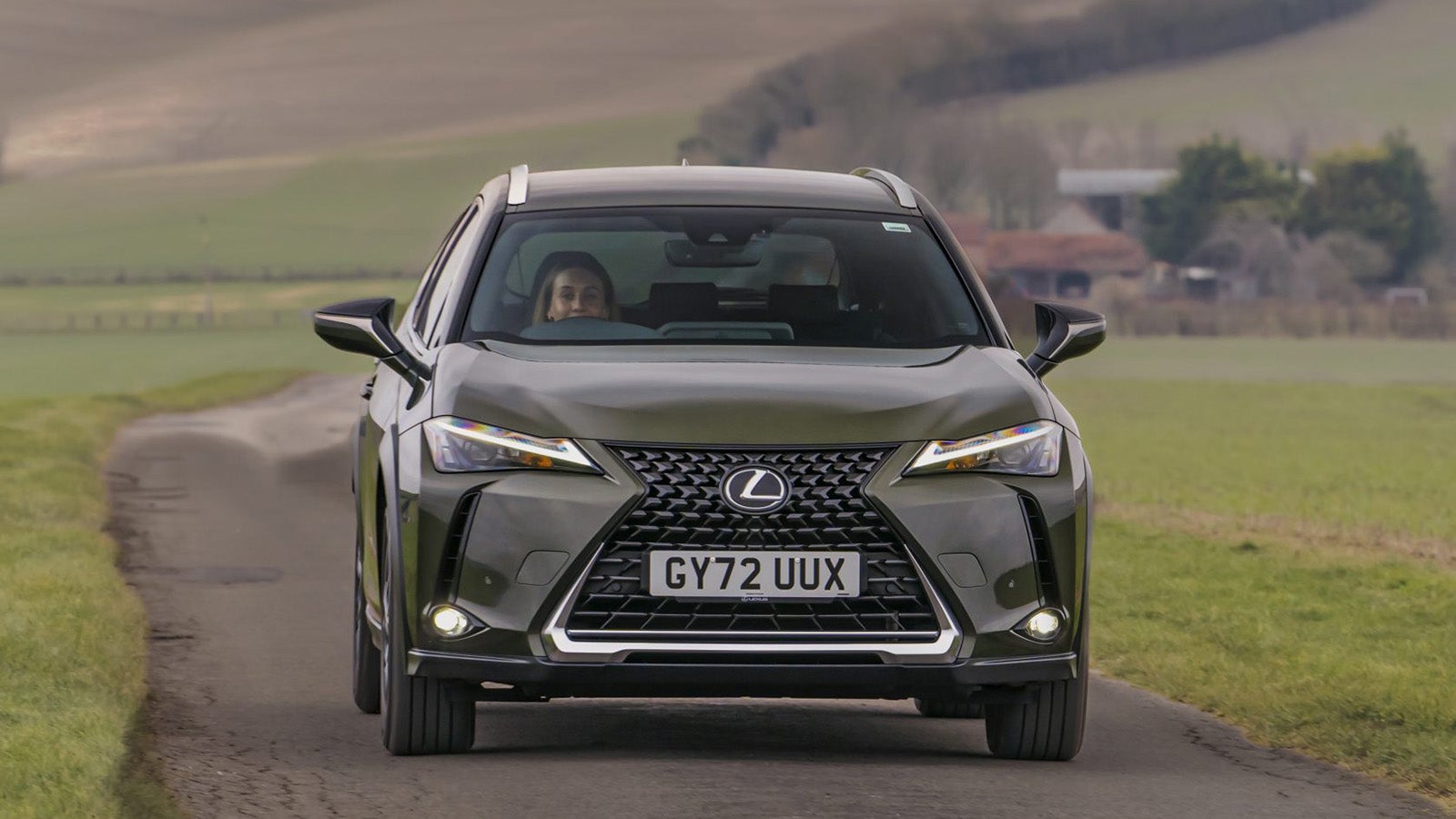

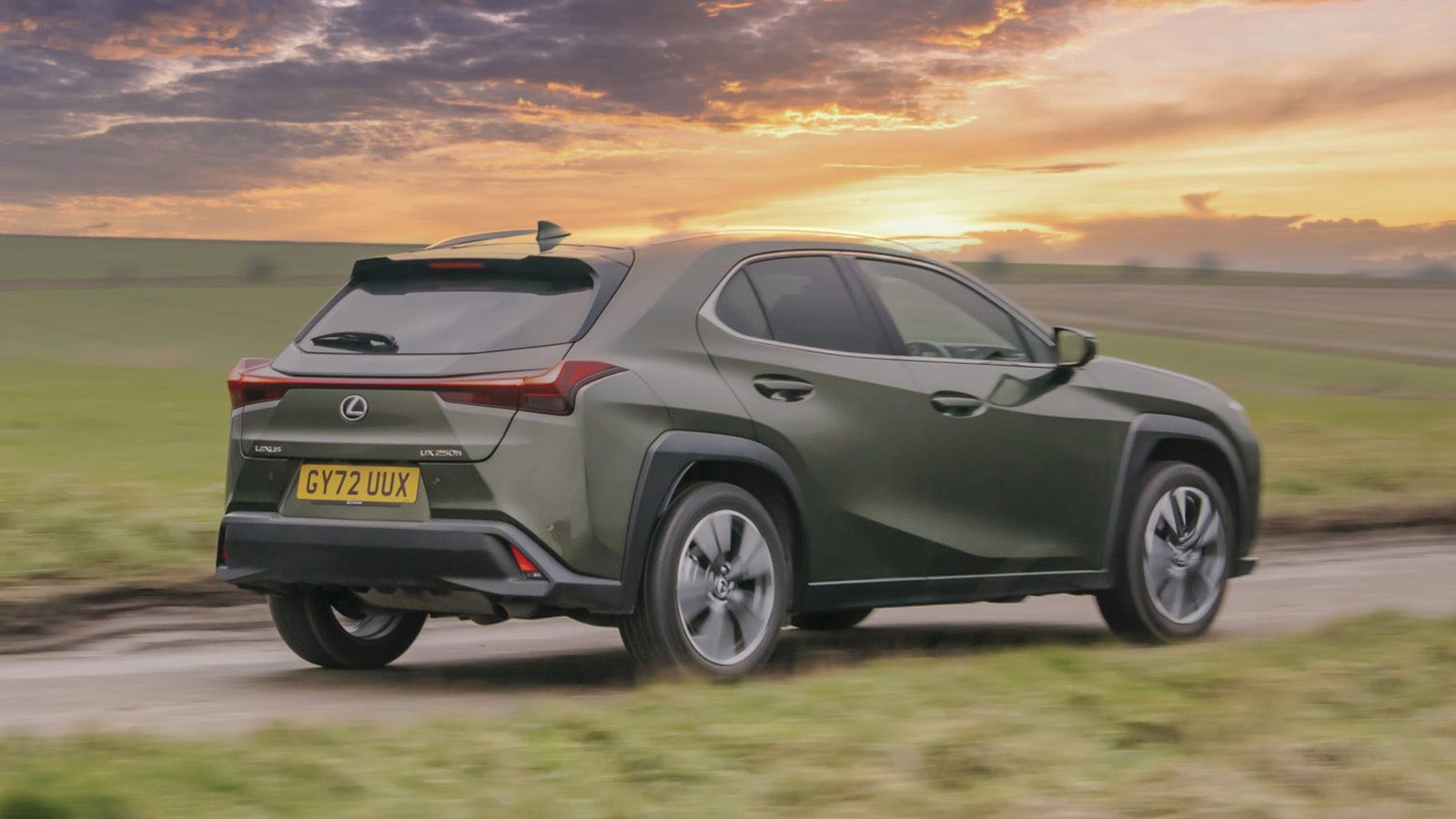
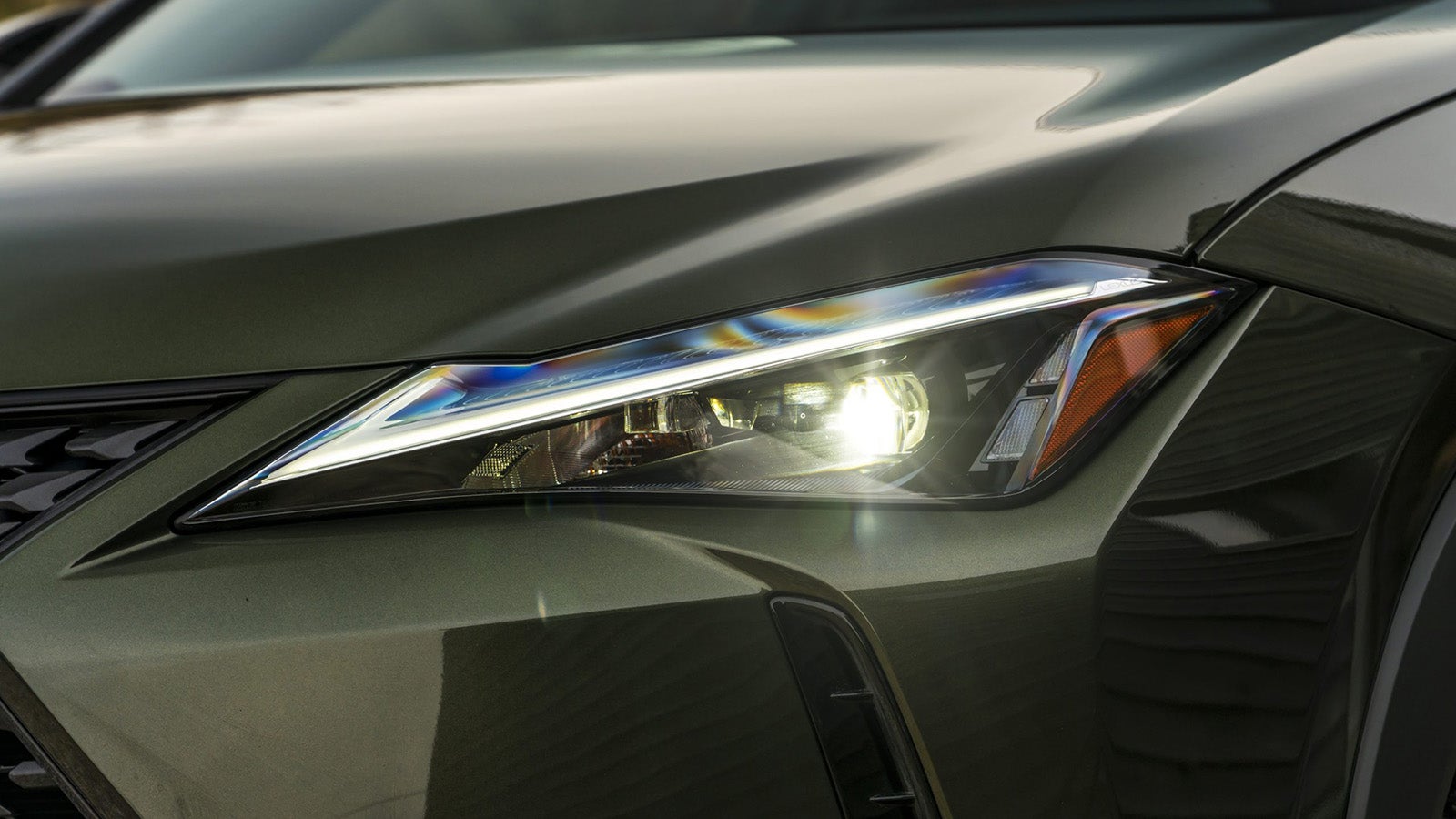
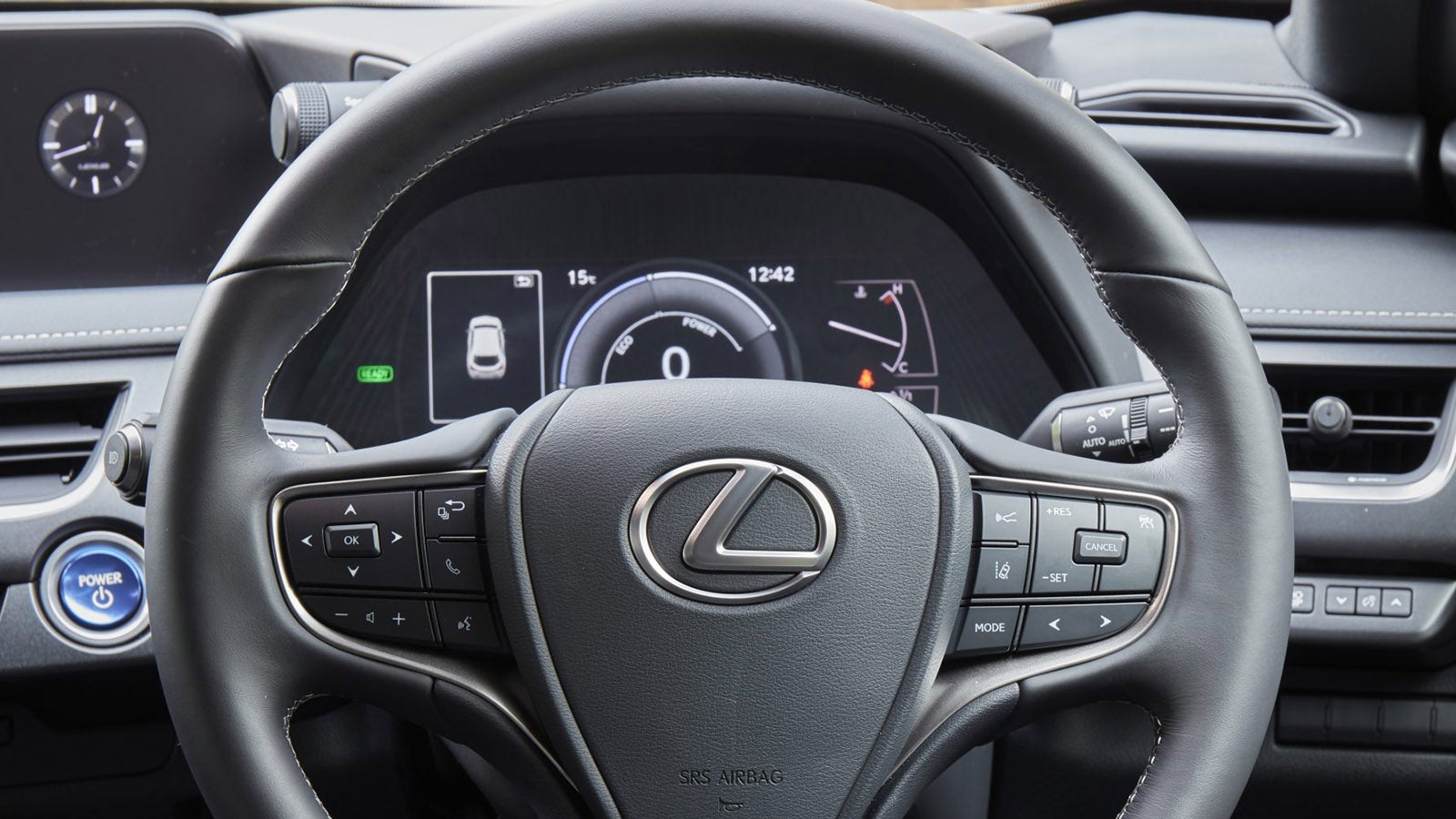
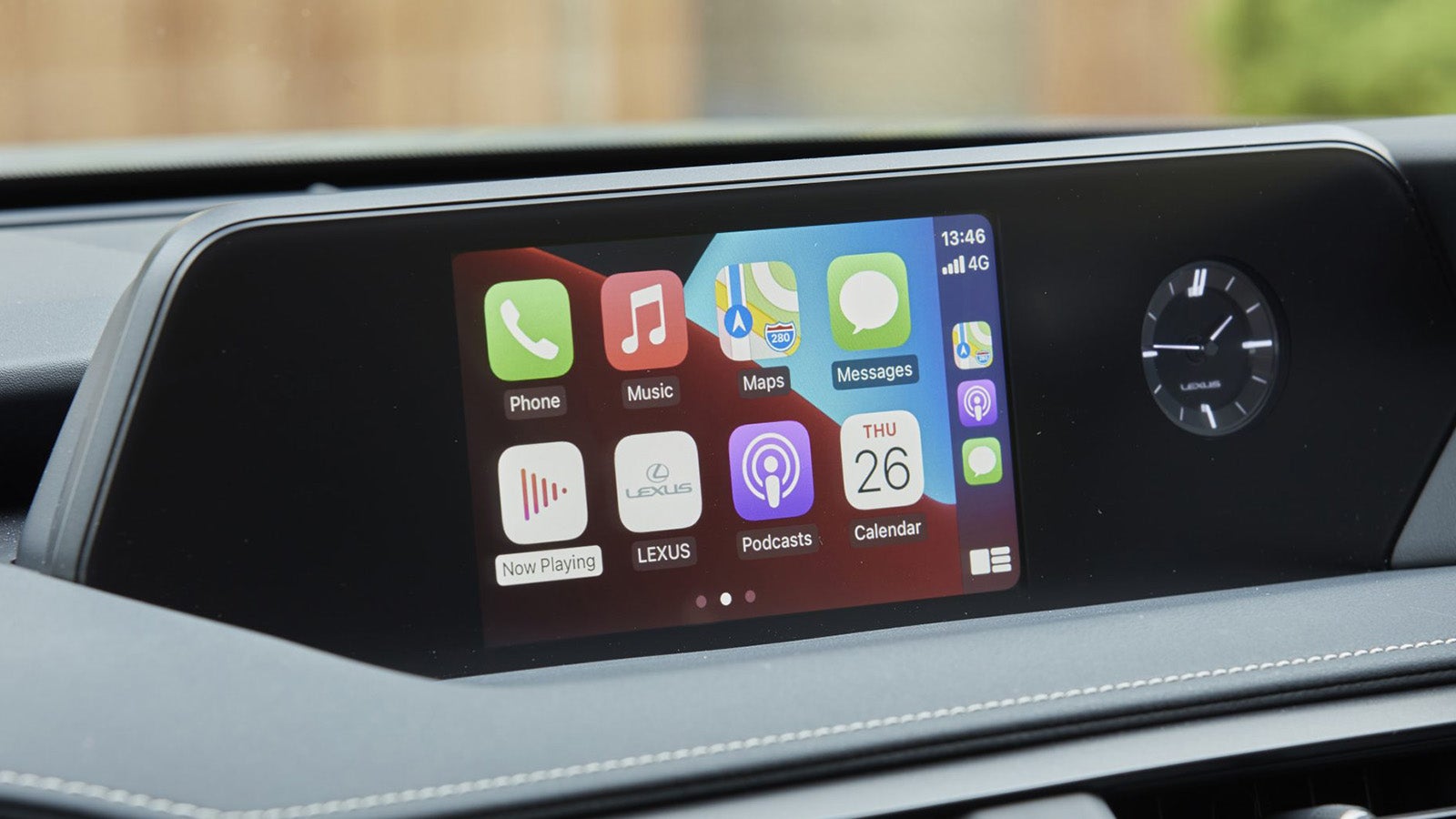
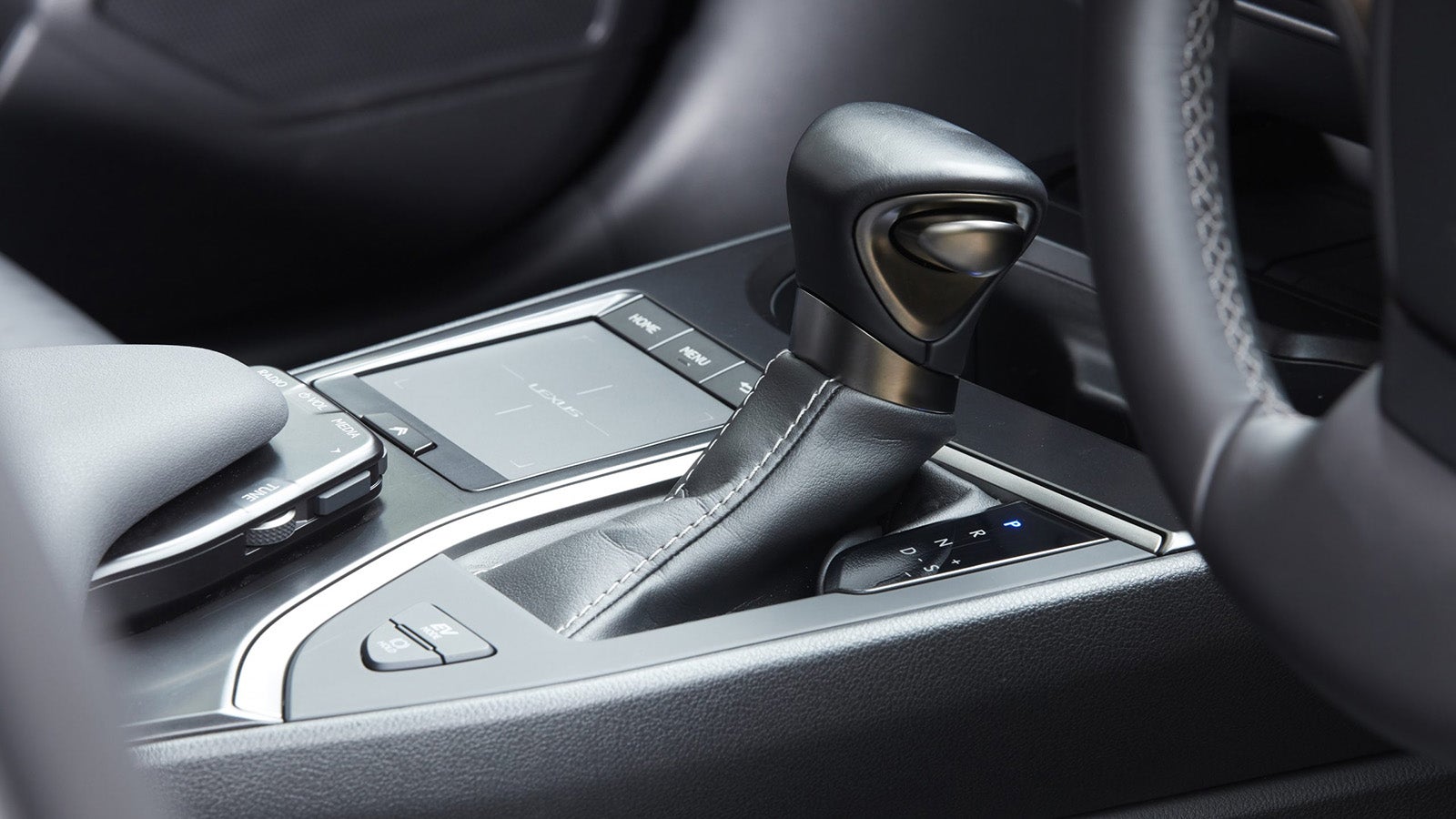
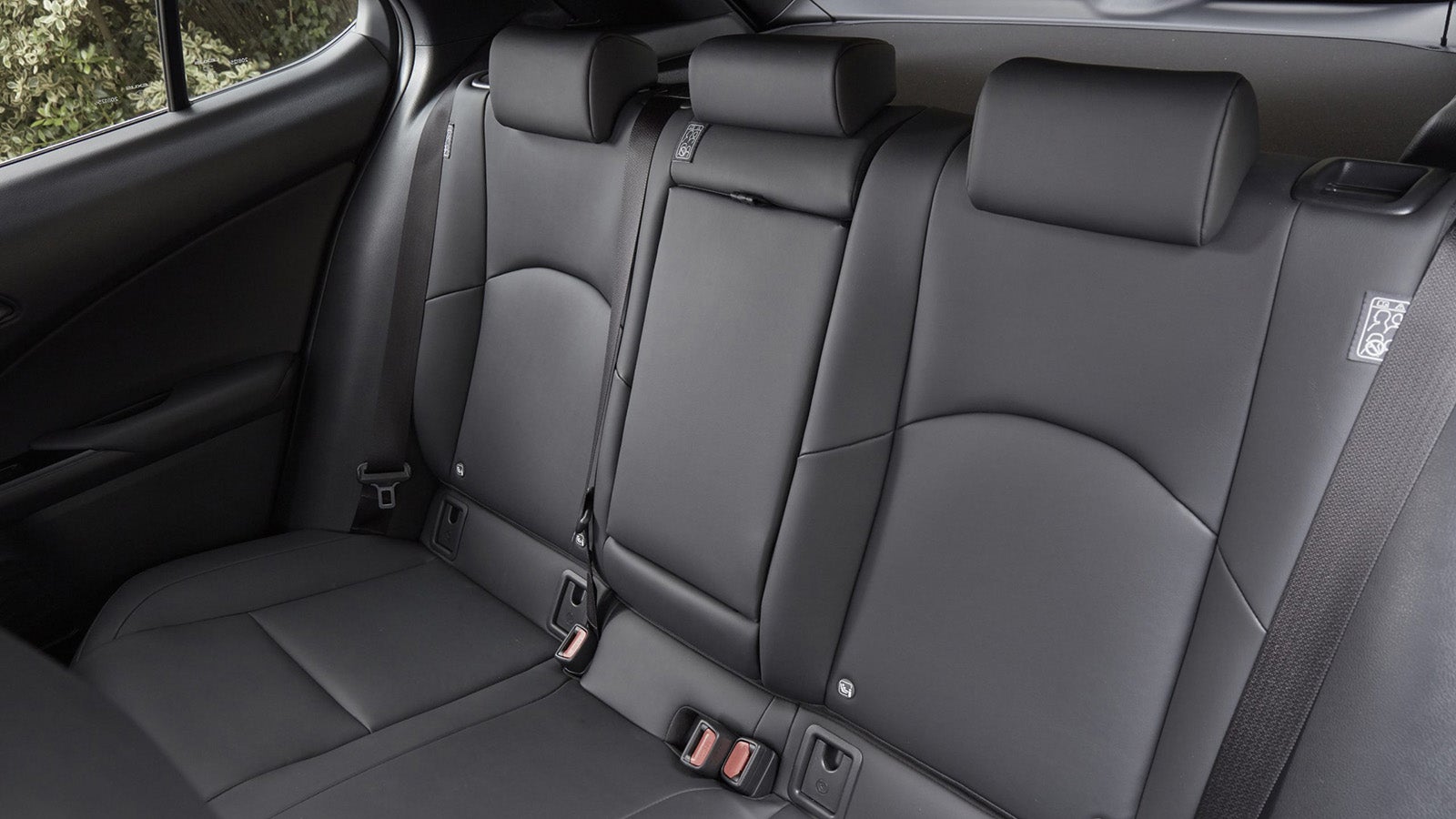

Lexus UX Review

The Lexus UX should be an easy sell – it's a compact, premium SUV that competes with the popular BMW X1, Audi Q3 and Mercedes GLA. In the UK, however, the UX hasn't enjoyed the same success as those cars.
That's partly down to British buyers' brand preferences, but also because the UX can't quite match the practicality or performance of those models. On the plus side, this means UX models undercut all their main rivals on the used market by thousands of pounds, which means a nearly new UX feels like a bargain.
- Superb build quality
- Fuss-free to use
- Cheaper than rivals on the used market
- Disappointing practicality
- Underwhelming performance
- Feels a bit dated
Should I buy a Lexus UX?
The market for small, posh SUVs is pretty crowded, and it'd be fair to say the Lexus UX hasn't quite made the same dent as cars like the BMW X1 and Audi Q3. Those cars seem to have mastered the formula for this segment – mixing a desirable badge and an SUV image with a genuinely practical platform, and garnish with flashy on-board technology. The UX ticks most of those boxes but falls a little short of the mark in other areas.
"While the UX's dash lacks the latest looks, it's very easy to get your head around, rarely requiring you to dive through on-screen menus to adjust settings"
So, should you scroll past the UX? We think not as there are plenty of plus points on its report sheet. Chief among which is its price – not as a brand-new car, where it's a little too close to comfort to an entry-level X1, but on the used market. Here, you'll find that most UX models come up several thousand pounds cheaper than any equivalent German rival. That means you can afford a newer or better-specced UX for the same budget, making it a substantially more tempting proposition.
It's not just your wallet that'll enjoy UX ownership, either. From the moment you step inside, you'll see and feel the quality we've come to expect from Lexus cars. There's nothing particularly cutting edge here – you'll even find a few hard plastics surfaces if you start poking around, but everything feels robust in a way that the most recent German rivals can't quite match. And, of course, there's Lexus' 10-year service-activated warranty to underscore the car's durability.

There's still something a little old-school about the UX's cabin. The infotainment system is mounted far back and controlled by a laptop-style mouse pad in the centre console, rather than the ubiquitous touchscreens found in rivals. You'll also spot things like the analogue clock and the large, clearly marked physical buttons for key functions, which feel a little 'last-generation'. That said, while the UX's dash lacks the latest looks, it's very easy to get your head around, rarely requiring you to dive through on-screen menus to adjust settings.
Under the bonnet, there's a choice of either a full-hybrid engine or a pure EV version. Performance for both is acceptable rather than outstanding, which is fitting for the car's relaxed demeanour. A BMW X1 or Mini Countryman is a better fit if that's you if you're after an SUV that can moonlight as a hot hatch. What's more important is that both hybrid and electric UX models are easy to drive, especially if you cover lots of urban miles where their electric motors make them both responsive and efficient. Being based on a fuel-powered car, however, means the UX 300e's range is much shorter than key rivals – more on that later.
The final stumbling block is the UX's 4.5-metre-long body. That means it takes up roughly the same space on the road as its rivals, but it doesn't deliver the kind of interior room in return. It's still large enough for a family of four, provided none of you are particularly tall and you can pack fairly light for holidays, but most rivals are bigger so those caveats don't apply. You can point the finger at the UX's tight, hatchback-like bodywork and relatively low roofline. Whether that's enough to strike the UX from your shortlist depends on your particular use case.
Interior and technology

Probably the most distinctive part of the UX's cabin design is the protruding instrument binnacle behind the steering wheel. This is a bit of a novelty these days as so many rivals have ditched this design in favour of a simple screen unit. On either side, you'll find little cylindrical controls to select the drive mode and deactivate the stability control – a nod to the Lexus LFA supercar.
Beyond these little details, there's not exactly much to excite the senses. There's a little too much black plastic for our tastes, although you can lift the cabin ambiance noticeably by choosing a UX with white or brown leather upholstery. What becomes more evident the longer you spend with the UX is how solid everything feels – switches and buttons click with the same precision every time, and there's absolutely no creaks or groans from trim pieces.

Lexus introduced a new pair of touchscreen infotainment systems for the UX in 2024, ditching the old laptop-mouse trackpad. While we've not tried them in situ yet, we've used similar versions in the Lexus NX, and found the software to be fairly clean and simple. Most UXes on the used market, however – like the one we're testing here – use the older setup with a deep-set infotainment screen, controlled by a pad in the centre console. This is a little fiddly to use, but Lexus has made it a bit more intuitive by including haptic vibrations to help you sense when you've moved the cursor over an option you can adjust.
Thankfully, you can bypass most of the software annoyances with standard-fit Apple CarPlay and Android Auto, allowing you to use your preferred mapping and entertainment apps. Plus, everything that isn't controlled by the screen is very easy to understand as Lexus has included large, clearly labelled physical controls for most key functions. Call us old, but we'd take this old-fashioned approach every time rather than fiddling in menus to find the heated seat control, for example.
Practicality
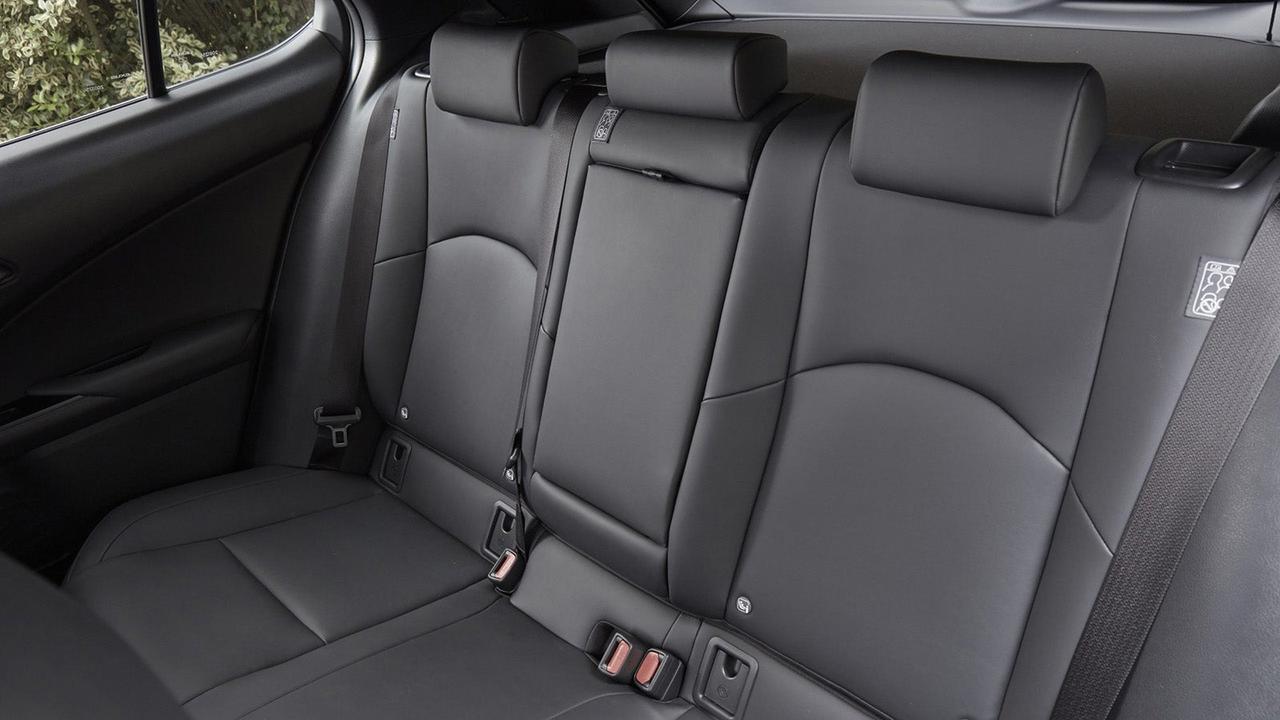
The UX has just enough practicality for the average owner, but it falls someway short of the class standard, with cars like the BMW X1 and Audi Q3 offering noticeably more space. It's not quite as compromised as the Toyota C-HR with which the UX shares a platform, but it's still less than you'd expect from a 4.5-metre-long SUV.
Space up front is decent, with enough room for a tall driver to get comfortable, and a good range of adjustment in the seat and steering wheel. The problem starts when someone tries to sit behind a tall front occupant, where they'll find there's barely any rear legroom left over and even average-sized adults will find their knees grazing the front seat back. As a result, you might need to negotiate a middle-ground if you are carrying taller passengers, which is a compromise rivals don't demand of you. Rear headroom is fairly poor too, and anyone even close to six-foot tall will have to slouch dramatically to avoid bumping the headliner.

Hybrid UXes claim 320 litres of boot space – substantially behind most rivals in the class, which usually get 450 or more. Part of the problem is the sloping rear windowline that robs almost any spare space above the parcel shelf, while the fairly narrow opening and high boot lip do little to make the situation any better. EV UX models are actually a touch larger than the hybrid, claiming 367 litres. You'll get a pushchair or a family's holiday luggage in there at a pinch, but you'll want a larger car if you're regularly filling your boot.
Cabin storage is equally underwhelming, with a small glove box and door bins. There's a handy central cubby between the driver and front passenger with a clever lid that hinges on both sides, allowing either passenger easy access. On models that have a wireless phone charger, you can slide this out the way to reveal an extra little storage tray beneath it.
Engines and performance
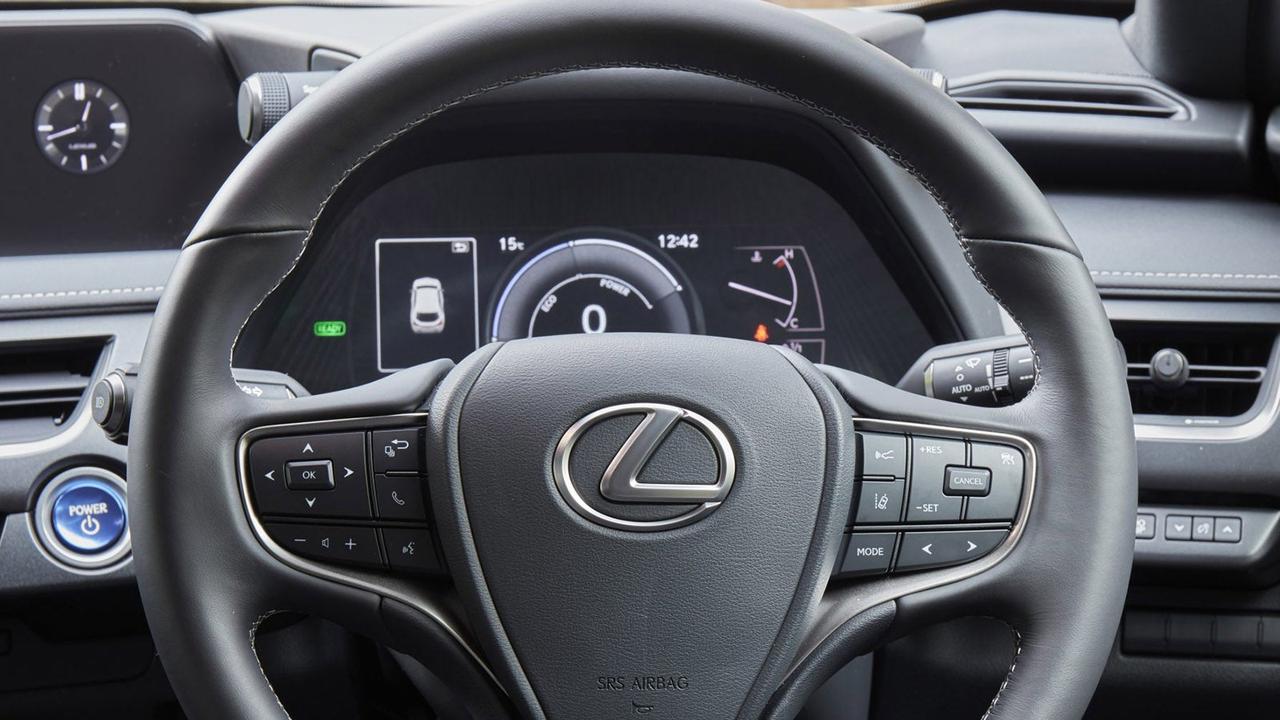
Let's start with the hybrid UX, as this is the one with the broadest appeal. Pre-2024 UX 250h cars use the same 2.0-litre full-hybrid setup as you'll find in the Toyota C-HR and Corolla. That means 184hp combined for a reasonably sprightly 8.5-second 0-62mph time. Outright power isn't really the most impressive part of this drivetrain, however, as full throttle will send the engine revs flaring up, which somewhat undermines the UX's generally calm attitude. A 2024 update boosted power to 196hp, shaving around half a second from the 0-62mph time.
Where the UX hybrid shines is in regular driving and, in particular, in urban environments. Here, the hybrid electric motor delivers quick off-the-line acceleration without waiting for an automatic gearbox to figure out what to do, backed up by a very efficient petrol engine for superb efficiency in stop-start traffic. You can readily expect more than 40mpg in mixed driving and probably more than 50mpg if you drive in mostly urban areas. Like all Toyota and Lexus hybrids, the pedal tuning is absolutely perfect, so you're never guessing how much brake or accelerator you need when cruising around.

If you have the ability to charge an EV at home, you might find you can save quite a lot of money with the battery-powered UX 300e. Before a 2023 update that brought a larger battery, UX 300e models came with a 54kWh pack, returning a range figure of around 190 miles depending on the size of the alloy wheels fitted. That wasn't an especially impressive figure when the UX launched and it's even less competitive now, when an entry-level Tesla Model 3 will cover more than 300 miles. However, if you have a second car and mostly cover urban miles, that should still be enough for you.
A slight annoyance is the fact Lexus has equipped the battery-powered UX with a standard Type 2 connector for slow AC charging, while faster DC charging is handled by a CHAdeMO connector – like a Nissan Leaf. CHAdeMO is common in Japan but is being phased out in Europe so you might need to buy a pricey CHAdeMO-to-CCS2 adaptor if you want to make full use of the UK's high-speed charging network. From 2023 onwards, Lexus outfitted the UX with a 73kWh battery pack, substantially boosting range up to 279 miles.
Driving and comfort

If you've not already guessed from the UX's image and its choice of either hybrid or EV power, this isn't a car that's interested in blistering performance. Instead, the UX is much more focused on being an easygoing everyday car. As a result, the controls are light but accurate, the handling is predictable and stable, and the ride quality is fairly well judged. This experience is enhanced by the hybrid and EV choices, with both delivering effortless off-the-line acceleration without any jerkiness from the gearbox.
Should you take leave of your sense and decide to drive the UX like a racing driver, you might be pleasantly surprised by its response. Body control is excellent, with the UX never straying from its line, even over uneven road surfaces, while body roll is impressively well controlled, even if you start sawing at the wheel like you're doing a slalom. There's not much sense of reward to driving like this, however, with the UX happy to feel stable and planted rather than eager to tuck harder into corners.
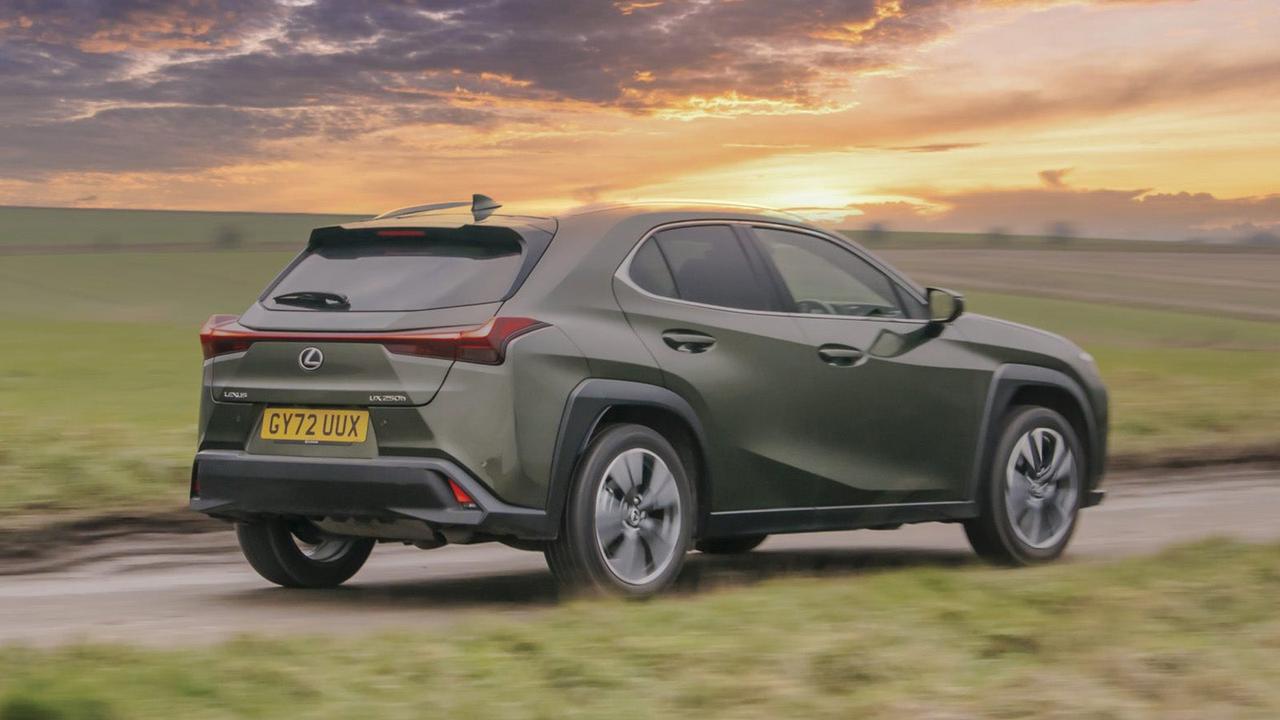
For the most part, the UX is reasonably comfortable. It isn't softly sprung, so you'll definitely sense its suspension working to smooth the road surface out, but almost none of the harshness from bumps and potholes actually makes it to the base of your seat, so the UX isn't especially tiring on long drives. There's a reasonably constant patter from the wheels over scruffy surfaces but it probably isn't enough to bother you – though you might want to avoid F-Sport models with larger alloys if comfort is a top priority.
Refinement is generally good, although big stabs of throttle in the hybrid version will get the engine spun up rather noisily. There's only the faintest whistle of wind at motorway speeds, with the distant sound of tyre roar and thumps as the suspension deals with bumps being a little more obvious in regular driving. The EV version is even quieter but not totally silent, with a fairly authentic electric motor whirr if you pin the throttle – a far cry from the dramatic sounds EVs like the BMW i5 can make.
































